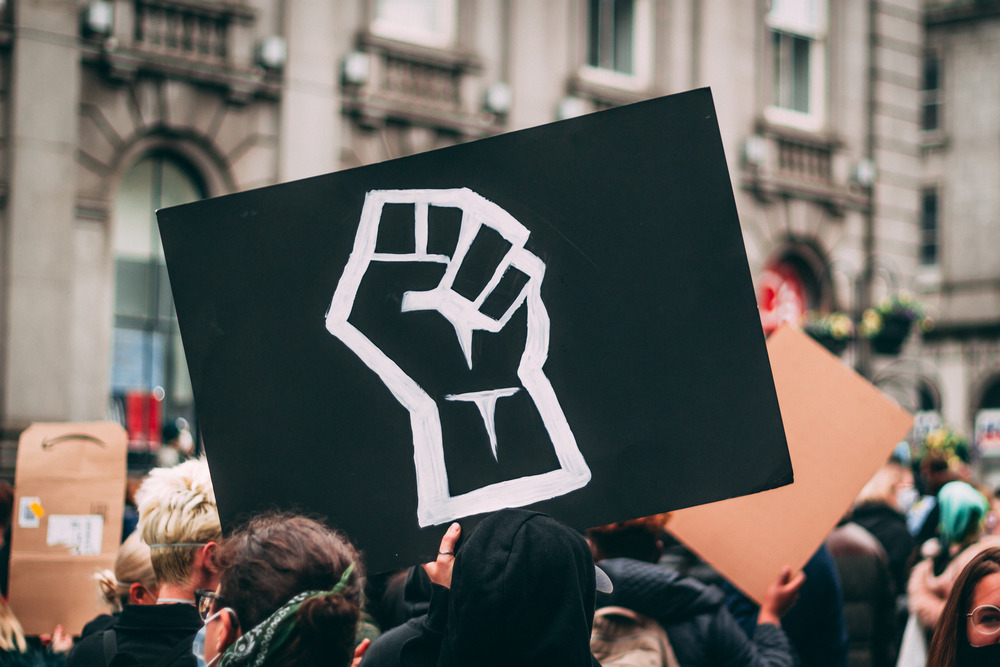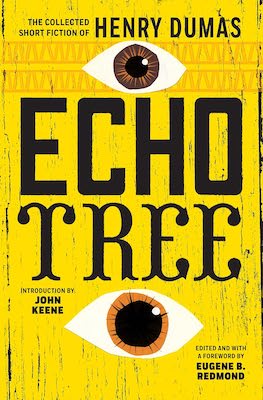Craft
When Innocent Black People Die, I Mourn The Life, The Potential, And The Art
The death of Jordan Neely reminded me of another Black artist whose life was taken far too young

When I first encountered the work of Henry Dumas, I was very nearly finished with my undergraduate degree in English. I favored American literature in my time studying, and was lucky to have access to syllabi that spanned a more diverse array of writers. The Black writers I would come to know intimately were who you would think—Toni Morrison, James Baldwin, W.E.B. Dubois. In my modern fiction studies I found Helen Oyeyemi, Noviolet Bulawayo, and Zadie Smith. In my second-to-last term, a friend of mine took a short fiction class on a whim. They were studying Fine Arts, and I remember them being floored by one story in particular. It was Thalia by Henry Dumas. I was intrigued because, while they didn’t read very much, they texted me that the writing was almost overwhelming, spellbinding, that it was special—it took a lot to process. I myself was experiencing a deep disillusionment in my academic career— reading, or really skimming, because I had to.

I felt a sense of pointlessness in not being invigorated by writing, but churning out essays from necessity. Moreover, reading authors of color often had much to do with examining necessary, but heavy texts relating to the violence of their time. Studying slave narratives like Mary Prince were illuminating, but exhausting. The recommendation of Dumas excited me, and in looking for a copy to read, I came to find that his works were almost impossible to come by in print. Copies of his short story collections were few and far between, and expensive. They were not stocked in any library in my city, and they were not available in any local bookstores. Finally, I was able to access a PDF through my school’s online database.
Thalia opens with a breathless meditation on a past remembered and cherished, the reader held so close alongside the narrator’s grief and denial it almost feels claustrophobic:
“Somehow I heard the snow begin to fall even before it began its slow feathery descent. I thought of the sweater of wool you made for me. I was sitting upon the damp tree where we always sit, the tree with the notches carved from the first limb down to the roots. You know the tree, the tree where I wrote to you and you cried. And afterwards the tree broke the silence of winter that year, and shook away the fist of ice that paralyzed it. Remember how my knife bit into the bark and the tree bled, and you sang warm verses? The same tree I sat beneath, and I heard the wind, hoarse from barking all winter, but cold and ruthless. Maybe it was the wind that told me the snow was going to fall. I cannot say, for I was listening to your voice. Everywhere I turned I saw you, and whenever I reached to touch you the touch of passion told me the truth, that you were gone and I must bring you back. Thalia, every moment you were gone has been like time racing backwards into a darkness I care not to try to remember.”
What follows is six pages spanning the narrator’s journey through a night out with the aforementioned Thalia’s brother, in which he regularly speaks in asides to Thalia (to himself, to the reader), asking her about their life together, what she remembers. The scenes become increasingly surreal, time-bending, and distorted, his reality shaky and unclear. Speeches that could be real or imagined, delivered like sermons, concerning ideas of God, evil, love, and power draw the reader into a cramped bar, along the wintery streets, and finally, by the sea. At one point, the unnamed narrator takes his watch to a watchmaker who tells him that it is broken, and that he will need a new one. He replies, “Yes, this one runs too fast or too slow.” The watchmaker says: “No, it does not run at all.”
I knew immediately what my friend meant about the writing being special. It wasn’t only that I hadn’t read anything like it, but that it was so emotionally dense, delicate, and all-encompassing, strung together in six pages that felt at once brief, but also like an eternity between each paragraph.
I came to find that his works were almost impossible to come by in print.
Thalia lives within a collection of short stories called Echo Tree, and later would be selected as the winner for the Black Scholar literary competition by James Baldwin. His short stories, along with his poetry, vary in genre and theme, sometimes veering into the gothic, romantic, and mythological. He was influenced heavily by jazz (he once studied alongside artist and philosopher Sun Ra), gospel, African American history, Christianity, and the supernatural. His writing was a genuine universe, in every sense of the word.
Beyond being transfixed by Thalia and searching for more of his work, I could only wonder how I had never once heard of him. In all my time at university, I’d never even read his name in a reference. In my last semester, I spoke briefly with a professor who was instructing my course on romanticism. We talked about the things we were reading outside of class, and I mentioned Dumas, to which he replied something to the effect of, “Oh yes. I’ve not read much, but there’s some very good work there.”
As time went on, I began to feel more and more like I had come across the precious metals left by a ghost that nobody had collected, because everyone had forgotten. It does not take long in looking into Henry Dumas to discover more about him, and though what is available is scarce, his murder remains the great specter hovering between each line of text. It is clear and definitive that he died, and that he was shot. Everything else remains faded, far away. His death, shrouded in mystery and senseless violence, leaves his ephemeral life behind like a faint, tragic question in the world. While unclear, his murder is referred to by many, as it is the necessary fact in speaking of his life. The events of the day are colored by a different shade in each mention, creating the uncanny collage of a spirit snuffed out too early. Toni Morrison spoke of his murder after taking it upon herself to posthumously release his works: “A young black man, Henry Dumas, went through a turnstile at a New York City subway station. A transit cop shot him in the chest and killed him. Circumstances surrounding his death remain unclear. Before that happened, however, he had written some of the most beautiful, moving and profound poetry and fiction that I have ever in my life read.” Another source states simply: “At the age of 33, Dumas was shot and killed by a New York City Transit policeman in a case of mistaken identity.”
Dumas was born in Sweet Home, Arkansas. The Encyclopedia of Arkansas states:
“Dumas was shot and killed by a New York Transit policeman. Details surrounding his death remain sketchy and controversial; some evidence suggests that this shooting was a case of mistaken identity, while other evidence suggests that Dumas’s behavior led the officer to believe that Dumas was reaching for a weapon. Regardless of the exact circumstances, Dumas’s tragic, early death serves as a reminder of the capricious state of black men in American society during the 1960s and beyond.”
Visible Man, a book about Dumas written by Jeffrey B. Leak contains the most detailed information on his life, upbringing, relationships, writing, and death that I’ve come across. Yet, the confusion around his fate remains:
“On May 23, days after [a] wedding, a white transit patrolman shot Dumas after attempting to intervene in an altercation between Dumas and at least one other person on a Harlem subway platform. Accounts vary about the number of people involved, but it appears that Dumas was involved in a conflict with one person, and given the way in which the conflict evidently escalated, other people who were there felt in peril. The circumstances of the shooting were unclear, and after the passage of nearly five decades, many questions cannot be answered.”
Many questions cannot be answered. A case of mistaken identity. Maybe the feeling that there was violence on the horizon, though Dumas was unarmed at the time of his death, the threat of him necessitated his shooting. This story is an old one, and it was passed down by another, and it runs underneath our days today, with each loss misremembered, forgotten. These instances hold hands across time. In Henry Dumas, we have the ability to look inside him, to examine his heart long after he died. It’s not nearly enough, but it is a gift. Others were not and will not have this afforded to them. It brings to mind other cases where marginalized people with singular, unique, creative voices are damned by who they are, and what they do. What do we lose when we discard these people with so much to give, because we don’t want it, don’t understand it?
Though Dumas was unarmed at the time of his death, the threat of him necessitated his shooting.
I think specifically of Jordan Neely. In an uncomfortable parallel, he was murdered by another civilian on New York City transit. Dumas was 33 at his time of death; Jordan Neely was 30. Neely was homeless, and spent much of his time on the subways, dancing and notably impersonating Michael Jackson, for money. It seems that performance was once a means for him to keep himself, and his spirit, alive. He lived nowhere, but was on the subway getting by. His mental health was deteriorating. He could not afford to live. Neely’s experience is not unlike many others in the city who are unhoused, struggling to live, and are increasingly seen as inherently problematic, strung out, and violent. According to journalist Juan Alberto Vazquez, who recorded part of Neely’s last moments before being choked to death by Daniel Penny, Neely had said: “I’m tired already, don’t care if I go to jail and get locked up. I’m ready to die.” Daniel Penny took it upon himself to bring this death about. He felt he was protecting the public from Neely’s erratic behavior. According to the New York Times, witnesses saw Neely shouting at passengers, but there was no indication that he physically attacked anyone.
One woman gave a quote about the incident stating that the man who murdered Neely was a hero, that justice had been served. About Neely, she said: “I feel sorry for the man, but he was acting threatening.” In Jordan Neely’s death, the same conflicting sentiments we see with Henry Dumas’ shooting occur.
Damaging ideas about the homeless are often perpetuated by those who claim to (and perhaps truly believe themselves to) possess genuine sympathy for their plight. The underlying sentiment in a statement that starts with: “I feel sorry for him, but….” is often one of blame, disgust, and misunderstanding. There is an implication, a silent belief, that a person like Neely’s circumstances are created and worsened by himself and his choices, and everyday that he struggles is a choice to make life unlivable for himself, and potentially, anyone who encounters him. He was not the kind of homeless person who you can avert your eyes from going up the escalator in the subway, mutter a quick and quiet “no, sorry”, and be done with on the day he died. That day, he made them feel more involved. When pertaining to such a vulnerable population, words like “uncomfortable” and “frightening” are powerful weapons. Bystanders such as those who were interviewed after Neely’s murder do not often challenge their inherent discomfort around the homeless. The homeless have no history and no future once they leave their line of vision. They are able to rationalize why their discomfort should be assuaged, even if this results in violence, when it comes to them. It is easier to transform Jordan Neely from a person to a threat—a non-human entity who existed in a moment only to instill fear, and then be eradicated. It is easier to do this than to investigate his humanity.
Jordan Neely’s mother was murdered by her boyfriend when he was 14 years old. She was choked to death in her home, where Neely had been asleep in another room. Her body was found stuffed inside of a suitcase. The prosecution stated that the time it would have taken her to die from the strangulation was anywhere from 1 to 3 minutes. Witness reports of Neely’s choking death vary, with some claiming it went on for up to 15 minutes. Daniel Penny alleges that the interaction was about 5 minutes. His mother’s murder, coupled with its dark parallel to his own, is an enormous tragedy to process. Moses Harper, a friend of Neely’s, wrote of the enduring pain of Neely’s loss in an essay for The Marshall Project. The pair bonded over their shared love of dance, and particularly, of Michael Jackson tributes. Harper helped Neely pursue the craft more seriously. Their shared creativity was a lifeline for both of them:
“I don’t know about all of the ways that Jordan was trying to escape his pain, but perhaps the biggest one was performing. When he was Michael, moving his body, he could forget about his life. He was beautiful to watch. He had a gift, and I really appreciated watching him make it safe for a crowd to engage and dance. Being an artist, being a creator is how I decompress, too. I am a survivor of childhood physical and emotional abuse. And even though I have been through all these horrible things, I knew there had to be something else for my life.”
There had to be something else. It is clear that Jordan Neely desired something else, something that could make existing manageable, even pleasurable. But he didn’t have the tools. Addiction, homelessness, and the loneliness of survival in the city can make even the attempt to reach for such tools an insurmountable task. But of course he wanted more, that’s why he danced.
That’s why he was shouting on the train that he was tired and hungry.
In this pursuit of life, the thread between Neely and Dumas becomes more vivid. I think of what more for them. In Dumas’ case, we can parse out more of that would-be life. We do not have this luxury with Neely. Dumas had opportunities Neely did not; an education, housing, a career. Toni Morrison stated that in his life, Dumas “had completed work, the quality and quantity of which are almost never achieved in several lifetimes.” For Jordan Neely, we have only the suggestion of a creative future.
The homeless have no history and no future once they leave their line of vision.
Through Dumas’ writing, a more fleshed out portrait of the man comes into focus. We are able to analyze and connect with his ideas, his style, his influences. Moreover, Dumas’ works have been published posthumously, and while not widely known, they continue to exist – I found him. How could I ever have come across Jordan Neely, if not through his brutal murder, and the subsequent discourse inspired by it? We were only lucky to have something more to salvage with Henry Dumas.
The overall shape of their lives were different, sometimes starkly so. But the ways in which they mirror each other; their creativity, expression, the salvation they took in their respective mediums, are closely related. The ways in which they die are, too. In some ways, they represent two ends of a spectrum. Henry Dumas’ education and career may have adhered more closely to acceptable societal standards, whereas Neely’s life was high-risk and vulnerable, but this would not save him. They would both be failed by the same structures.
People agree or disagree that Jordan Neely seemed threatening, people can acknowledge that it was a tragedy or that it was a solemn necessity, but in the noise his humanity, like Dumas’, and like many before him, begins to shift. The granular details, whether or not something seemed
to be, move to the forefront in rationalizing his death. Many cannot accept the reality that white supremacy champions the senseless deaths of Black people, and encourages the lines in each predicament to be blurred.
Many cannot accept that we live in its home. In reflecting on them both, I feel the need to mourn the life, the potential, and the art. I mourn that we lost the potential to have Jordan Neely live to see his life play out. There are many structural influences that may have made that impossible regardless, but there is hope in imagining the ability to create the future that could have seen him dance longer, safer, touch more people’s lives, have a home, know peace, be a creative person in New York City. I mourn Henry Dumas’ short body of work, and the lengths to which it might have grown. These things that get passed down through generations, that help marginalized people make sense of the world through the talents and gifts of those before them. I mourn that in these deaths, everything, it seems, becomes lost.








